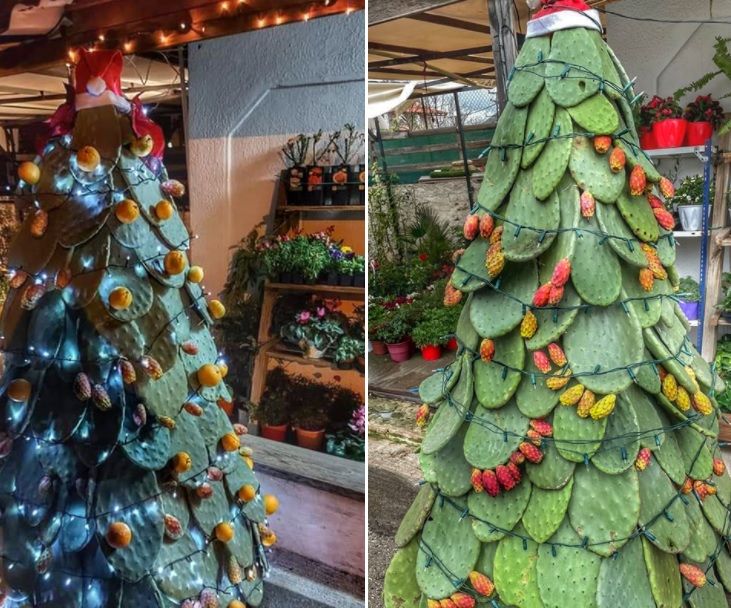
The town of Areopolis in Greece’s Mani region in the southern Peloponnese has decorated a huge prickly pear, called fragosykia in Greek, to make it its signature Christmas tree.
The prickly pear is widespread in Mani. The plant thrives easily, so it was used from ancient times not only as animal feed but also as fruit. In recent years some locals have also become involved in its cultivation and processing, since its seeds are used to produce oil.
The prickly pear which dominates the central street in Areopolis has become a magnet for locals and travelers alike.
The scientific name of the prickly pear is opuntia, named from the Ancient Greek city of Opus, located on the coast of mainland Greece opposite Evia, perhaps at the site of modern Atalanti.
There according to Theophrastus, whose surviving botanical works were an important influence on Renaissance science, an edible plant grew and could be propagated by rooting its leaves.
The fruit of prickly pears is edible
The fruit of prickly pears, commonly called cactus fruit, or cactus fig, is edible, although of course it must be peeled carefully to remove the small spines on the outer skin before consumption. If the outer layer is not properly removed, glochids can be ingested, causing discomfort of the throat, lips, and tongue, as the small spines are easily lodged in the skin.
In Greece, it grows in such places as the Peloponnese region, the Ionian Islands, and Crete, and its figs are known as frangosyka (Frankish, i.e. Western European, figs) or pavlosyka (Paul’s figs), depending on the region.
The stark landscape and rich history of Mani
Located on the southernmost tip of all of continental Europe, the Mani peninsula in the Peloponnese has a unique, stark landscape but its rich history and traditions make it a stunning destination for those who want to explore the real Greece.
Mani is an arid region and it has a rough edge to it, unlike many other regions in Greece. Its stone houses often look more like small forts (which they once were), while its Byzantine churches, tiny coves and awe-inspiring caves complete a picture that is worthy not only of travel books but history books as well.
Mani was the place where the Greek uprising against Ottoman rule actually started — not in Kalavryta on March 25th, 1821 – as is often believed.
Although that date was later designated as the day of revolt and the beginning of the War of Independence, revolutionary acts took place in several areas across the Peloponnese as early as March 17th of that year.
See all the latest news from Greece and the world at Greekreporter.com. Contact our newsroom to report an update or send your story, photos and videos. Follow GR on Google News and subscribe here to our daily email!



